Architectural Icons of Thessaloniki: Eleven Stories Through Time
This short walk takes in eleven...
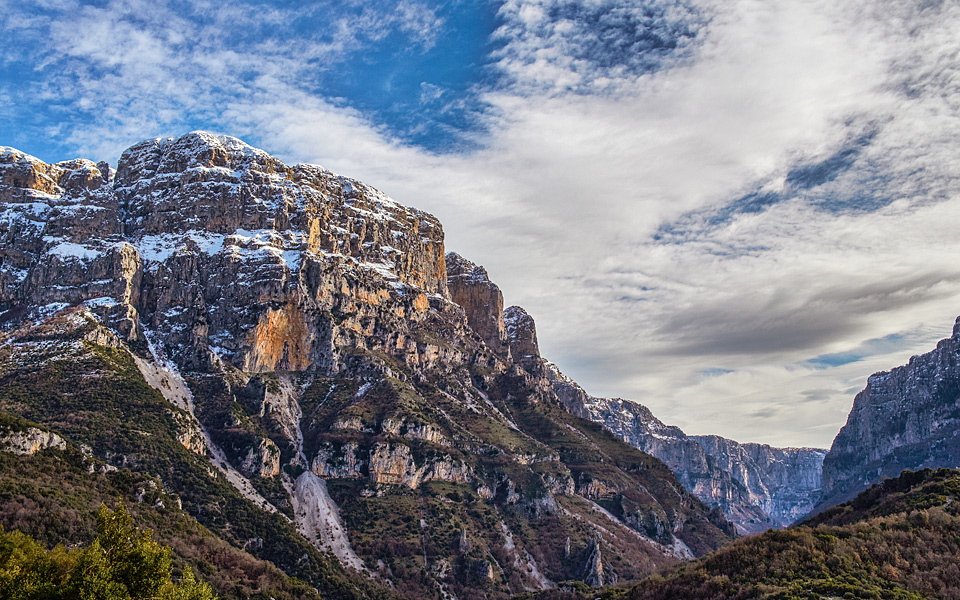
The famous Vikos Gorge.
© Perikles Merakos
The trails in the northern Zagori region of the Pindos mountain range are some of the most thrilling in Greece, not only for avid trekkers and mountaineers, but for every amateur nature and wildlife lover, botanist, birdwatcher or geologist. And pretty much everyone else, too.
A hike between the central villages of Zagori is a treat for history buffs, for example, as the easy stone-paved paths connecting them date back to the 18th c. – the region’s golden years. Back then, many of these pretty stone-built villages were only reachable by foot.
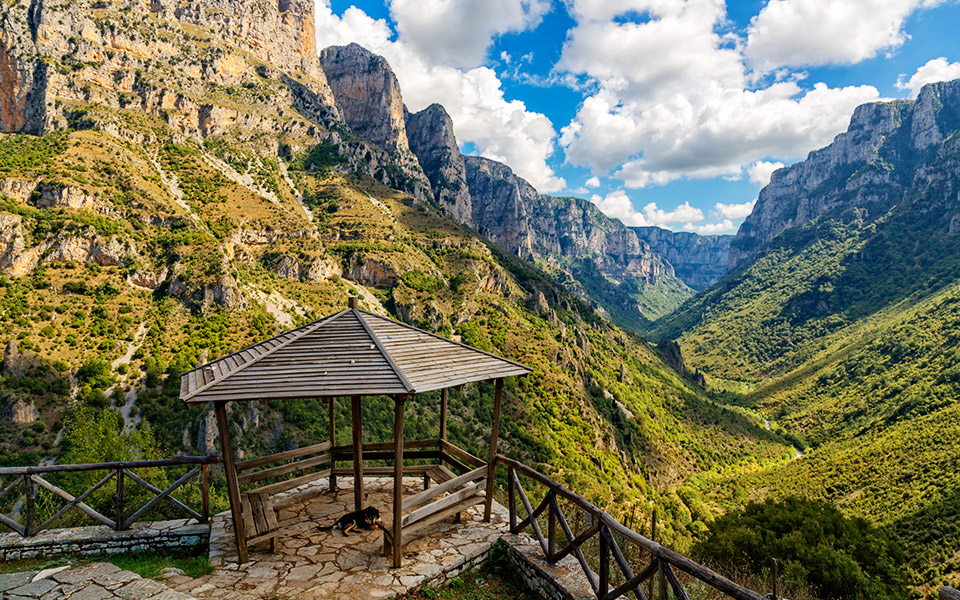
The Vikos Gorge
© Perikles Merakos
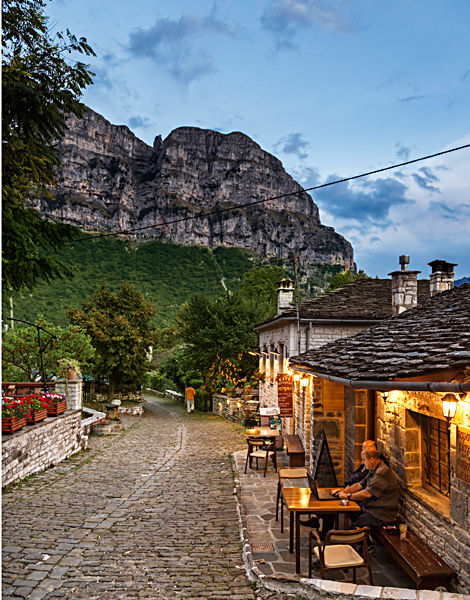
Papigo, Zagori
© Perikles Merakos
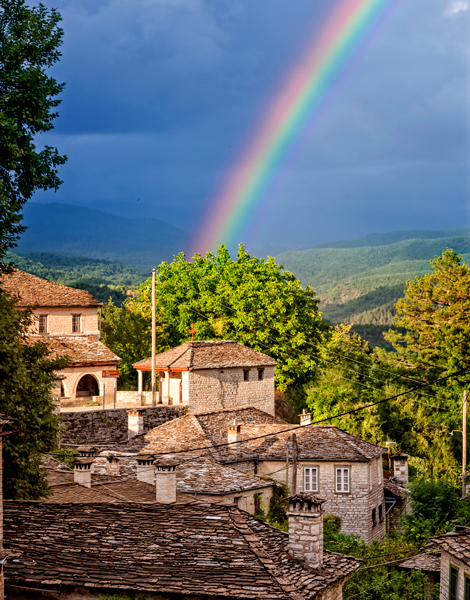
Dilofo, Zagori
© Perikles Merakos
In “Walking and Trekking in Zagori”, a new guidebook by Aris Leontaridis published by Cicerone, facts like this are followed by detailed trail descriptions created to help adventurers discover more of the wild mountain range.
Ranging in difficulty from easy one-hour walks to demanding two and three-day treks, the thirty trails described in the book are divided into five regions: Central Zagori, Vikos Gorge & Vicinity, Mount Timfi, Konitsa & Mount Smolikas, and Valia Calda & Metsovo.
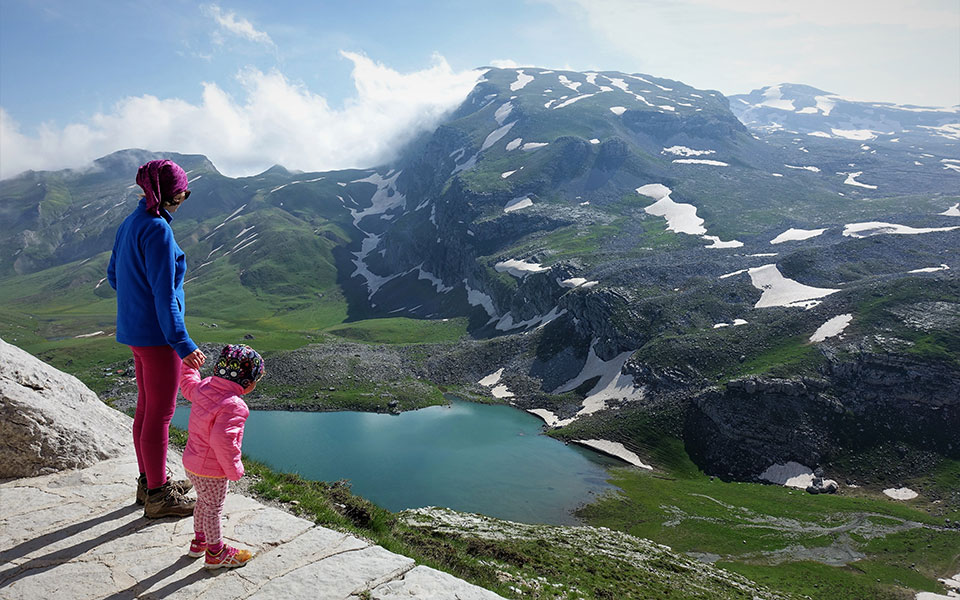
The glacier lake Kseroloutsa on Mount Timfi, as seen from the Astraka Refuge
© Shutterstock
In Central Zagori, known for its arched stone bridges and mansions, those trails that were once the paths used by traders and locals with their mules and horses, are now perfect for short and easy hikes.
In the Vikos Gorge on the other hand, hikes along the Voidomatis River are more adventurous, offering dramatic views of the 1000 m. tall rock walls reaching up on both sides, while the mist above the river adds a mysterious atmosphere. On the walk from Aristi-Papigo Bridge to the iconic Klidonia Bridge, Leontaridis suggests adding a rafting on the river as part to your experience.
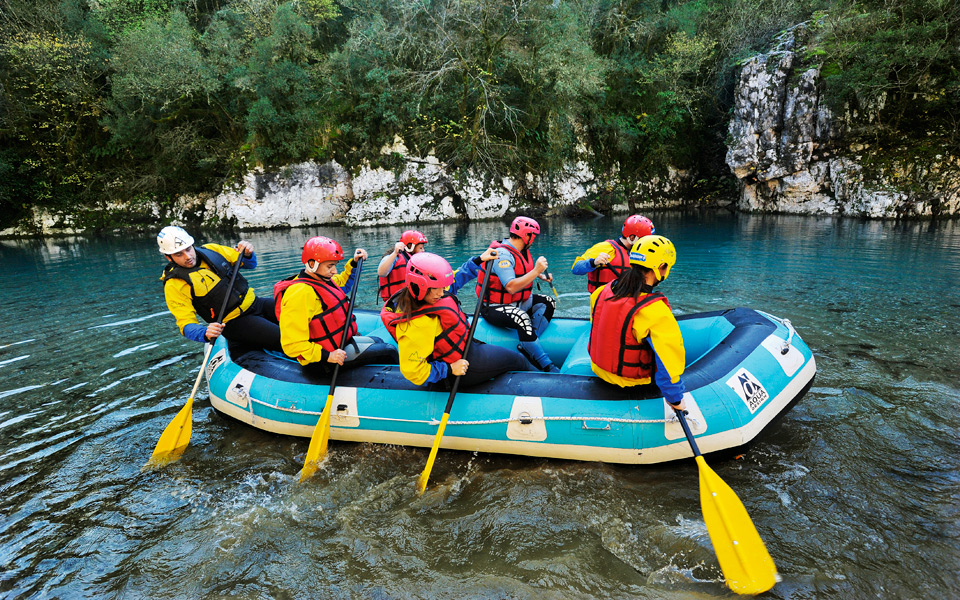
Rafting in the Voidomatis river.
© Alexandros Avramidis
Perhaps the toughest, or at least the least commonly undertaken walks are on the trails of Mount Timfi and Mount Smolikas. Some of them follow old shepherds’ routes through the wildflower-covered hills and secret mountain passes. The most famous sights on these mountains are the Drakolimnes, the Dragon Lakes, fabled to have once been the home of dragons at war.
On Mount Timfi, the beautiful landscape is almost completely void of trees, and legend has it that the dragon here used all the trees in the region as ammunition, throwing them at his enemy. Thus Mount Smolikas is now covered in pine forest – only the peaks of Smolikas are barren, but to reach some of them, a bit of rock climbing is required.
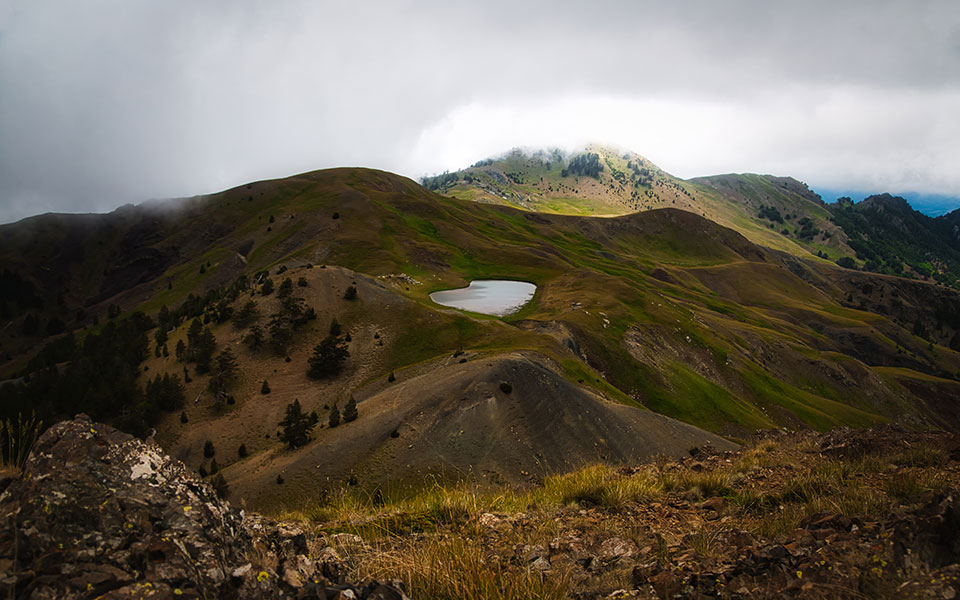
The Dragon Lake on Mount Timfi
© Shutterstock
Finally, in the Valia Calda Natural Park (Valia Calda meaning “warm valley” in the local dialect), the trails take you through meadows filled with flowers, beech and pine forests, all fed by rivers, lakes and streams creating a fairytale landscape that few can ever forget.
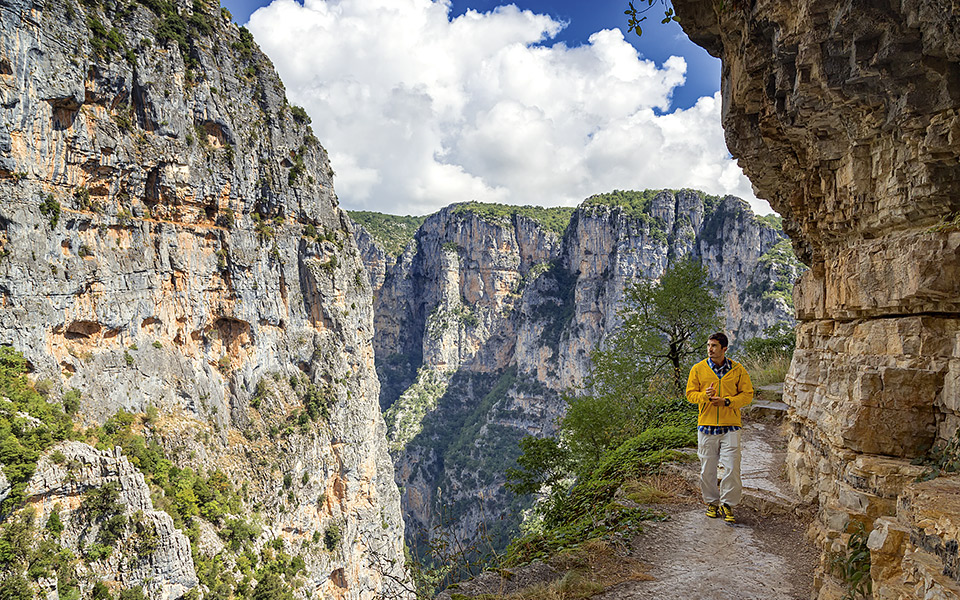
© Perikles Merakos
“Walking and Trekking in Zagori” is the first complete hiking guide to the Zagori region in English. While safe to hike, one should remember that these mountains are still largely untouched.
The book provides advice on everything from what emergency supplies to bring, to what to do if you get a snake bite or encounter a bear. The safety instructions should be followed, and mountaineers are urged to respect the pristine nature in the area, taking care not to light fires or leave any traces on the mountains. It is also a good idea to seek advice regarding weather and possible changes in the landscape from a local guide before venturing out.
Walking and Trekking in Zagori (2019) by Aris Leontaridis is available for purchase here.
This short walk takes in eleven...
One of the most impressive canyons...
When the summer crowds depart, Greece’s...
We spent seven days at Nefeli...